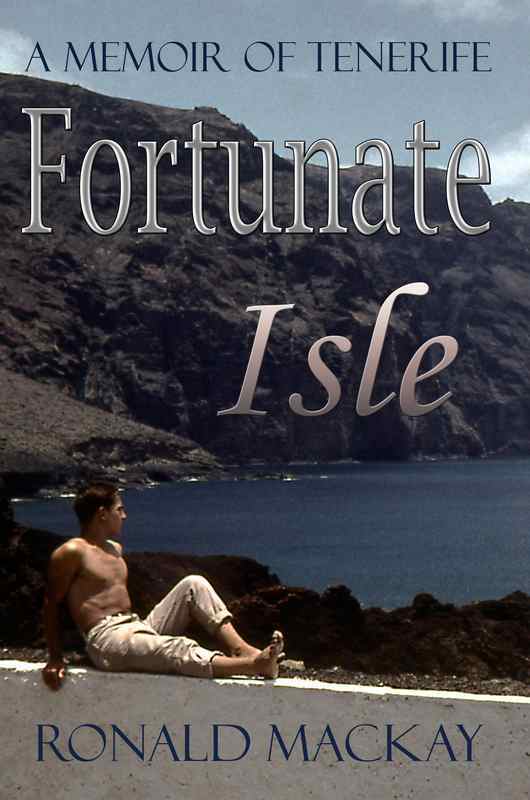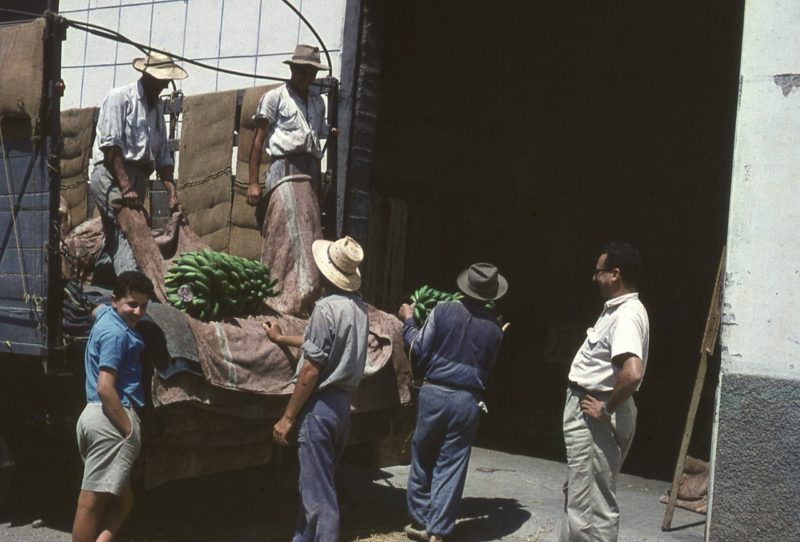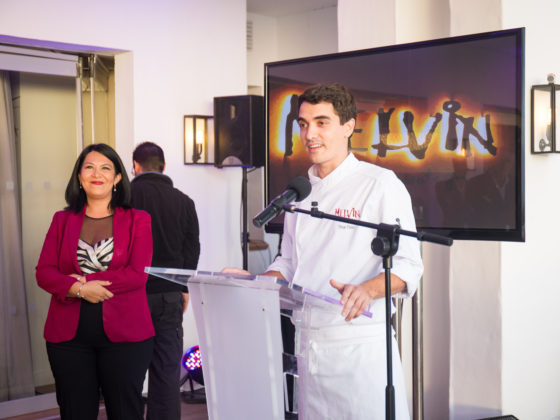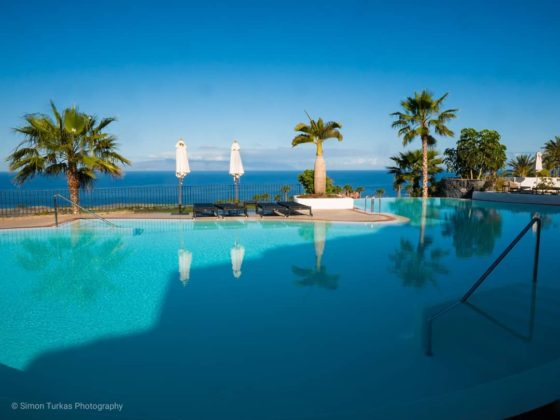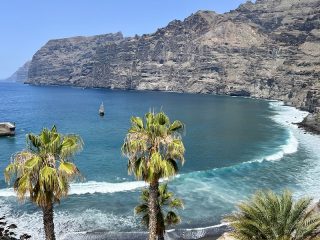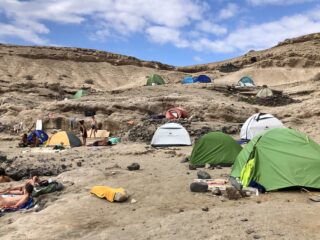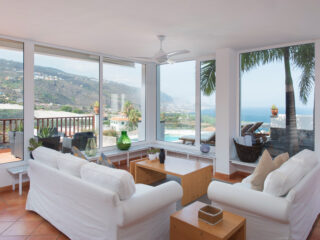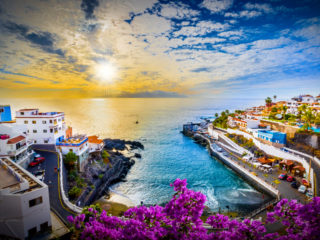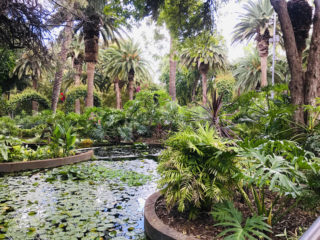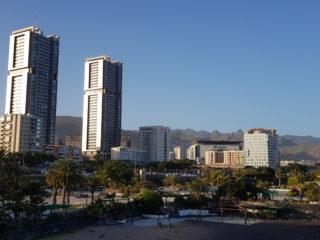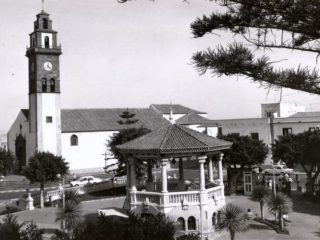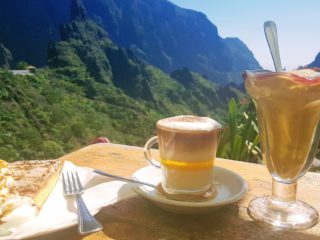In 1960, I spent my first three weeks in Buenavista del Norte exploring the region on foot and mastering the language. Because everybody was Spanish-speaking and curious about the solitary young ‘extranjero’ in their midst, they all greeted me and asked countless questions. Every evening, I looked up new words in my dictionary and studied Spanish grammar. Soon I was able to hold my own with anybody.
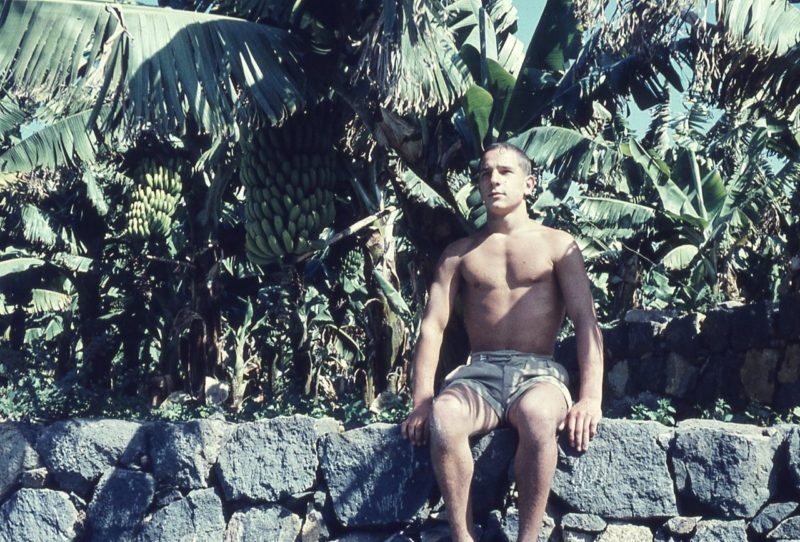
Doña Lutgarda’s cousin, Mata Cabra, offered me work, helping to construct a banana plantation. Juan Gonzales from Los Silos was our ‘encargado’. Juan, only a few years older than I, was a highly capable foreman. He was supportive and respectful of his work crew. Some dozen men and women, we made the daily ride to the worksite on the back of a lorry. We left the plaza at 7.15 a.m. and returned at 6 p.m. five days a week. The work was very hard but I had lots of fun and I earned enough to pay for my keep in the Pension Méndez.
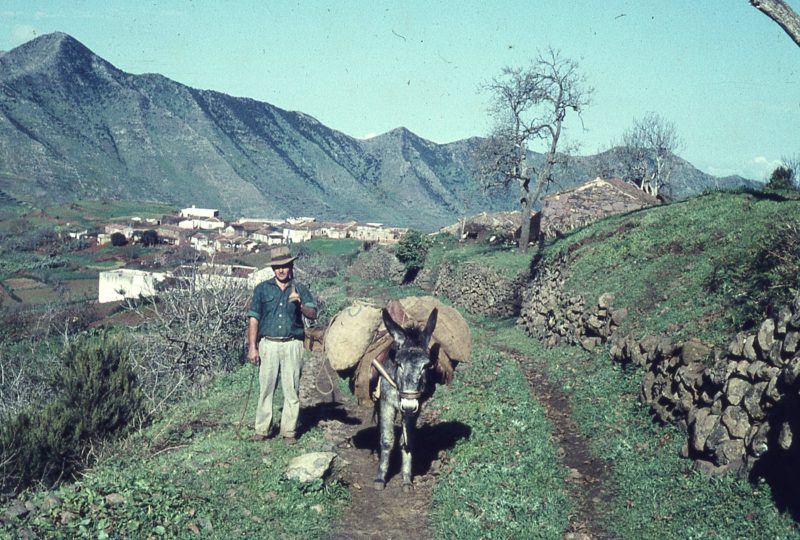
Our job was to excavate the plantation from the prickly wasteland. We did this mostly by pick and shovel. The men filled woven baskets full of clay and rock. The women carried these on their heads and dumped them into the lorry.
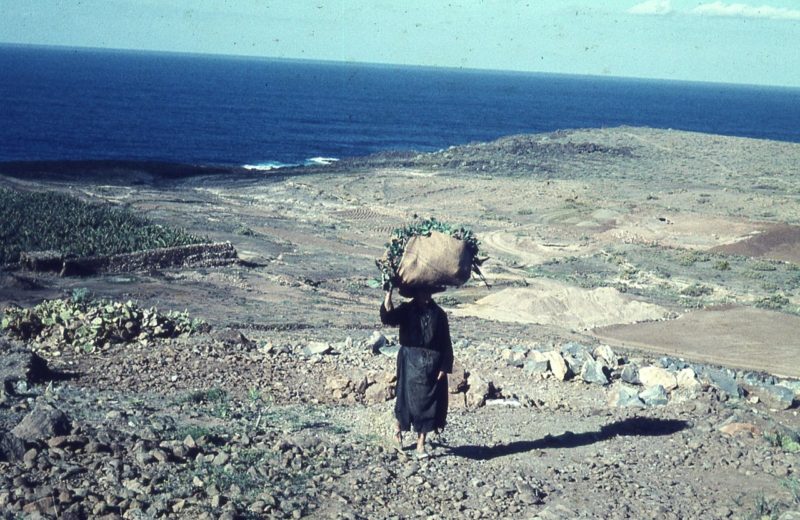
Occasionally we used dynamite to blast rock that defeated our picks and crowbars. Juan taught me how to lay sticks of dynamite, insert the explosive caps, and wire everything to the plunger. None of my fellow-workers dared to use explosives so I earned a reputation for fearlessness. Juan was an expert in all things from construction to managing plantations. We became good friends and I learned an enormous amount from him. We remain friends to this day.
When we’d finished excavating, we had what looked like an empty swimming pool the size of a football field. Then we built a stone wall as a foundation and brought soil from the mountains. We planted Irish seed potatoes and local banana corms. With water that came from reserves inside the mountains through complex networks of pipes and channels, we irrigated the planting.
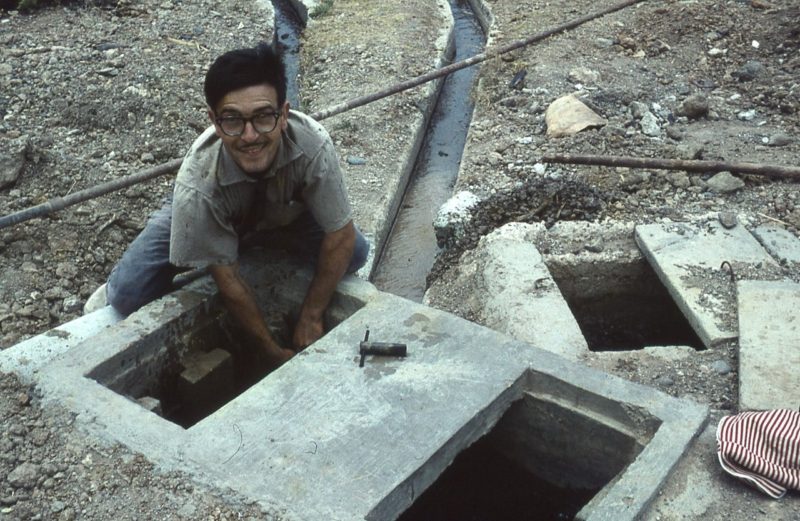
Finally, we built a cinder-block wall around the plantation to protect the future fruit from the constant wind that blew in off the Atlantic.
At weekends, we would hunt octopus among the rocks. Sometimes we’d go inland and find ‘mora’ trees laden with mulberries. I’d take my straw hat full of ripe berries back to the pension and Doña Lutgarda would make mulberry pies. Juan and I scaled Teide and explored the ice cave and the crater.
Don Juan-Pedro came from Arico and also lived in the pension. He taught school up in the tiny hamlet of El Palmar. One day, he invited me to talk to his class. Juan-Pedro used a blue motor-cycle but because the gravel road was so steep and dangerous, he asked me to walk the few kilometres up a rocky path to the tiny school.
His pupils had never seen an extranjero before and plied me with questions. When I told them I’d attended school for 13 years, there were cries of disbelief. Juan-Pedro talked to them in rapid Spanish and calmed them down. That night at dinner, he told Doña Lutgarda and the girls about my visit. “Why was there such a commotion when I said I’d attended school for 13 years?” I asked.
“Children in isolated hamlets attend school for only a few years,” he explained, “so 13 seems like a lifetime to them.”
“What did you say that pacified them?” I asked.
“Oh, I just told them we Canarios can learn in three years what it takes the feebleminded Ingleses 13 to master!”
Doña Lutgarda and the girls laughed. But they believed him!
When the construction job ended, Don Salvador offered me employment. Don Salvador lived in Puerto de la Cruz. He and Don Pancho owned ‘Alhambra’, a firm in Buenavista del Norte that exported bananas to Scandinavia. With a mixed work crew, we collected green piñas from the plantations and packed them in straw or pine-needles for protection.
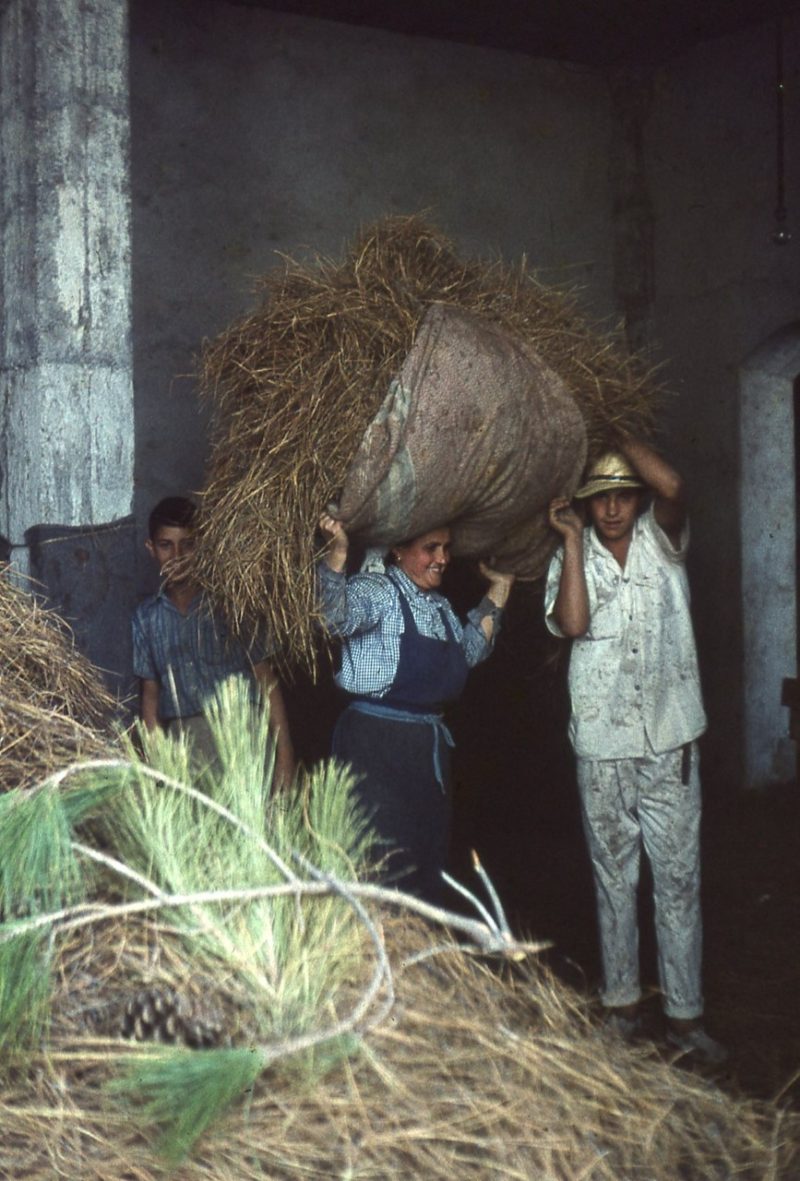
Miguel the lorry driver drove them overnight to Santa Cruz to be shipped to Stockholm or Helsinki. Banana stalks are cut green. They must be packed, kept cool and shipped rapidly to their market. Sometimes we worked 20 hours straight to get a lorry-load to the cargo boat waiting at the port.
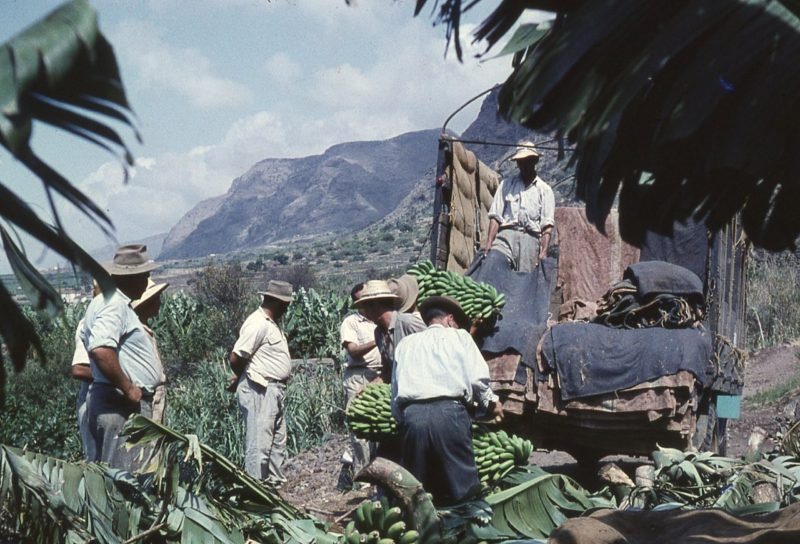 While working for Don Salvador, I fulfilled my ambition and graduated to carrying a machete. Epifanio, a quiet man with a lifetime’s experience of banana production around El Rincón, taught me how to judge the ripeness of a growing banana stalk. He showed me how to reach up with the machete and cut one so that it rested its 20 or 30 kilos comfortably on my shoulder.
While working for Don Salvador, I fulfilled my ambition and graduated to carrying a machete. Epifanio, a quiet man with a lifetime’s experience of banana production around El Rincón, taught me how to judge the ripeness of a growing banana stalk. He showed me how to reach up with the machete and cut one so that it rested its 20 or 30 kilos comfortably on my shoulder.
Doña Lutgarda Méndes Hernández and her large family, my co-workers and the villagers of Buenavista del Norte taught me a great deal. For their warm hospitality, for the gifts of their language and friendship, for sharing their culture and their ways, I salute the people of Tenerife with respect and gratitude.
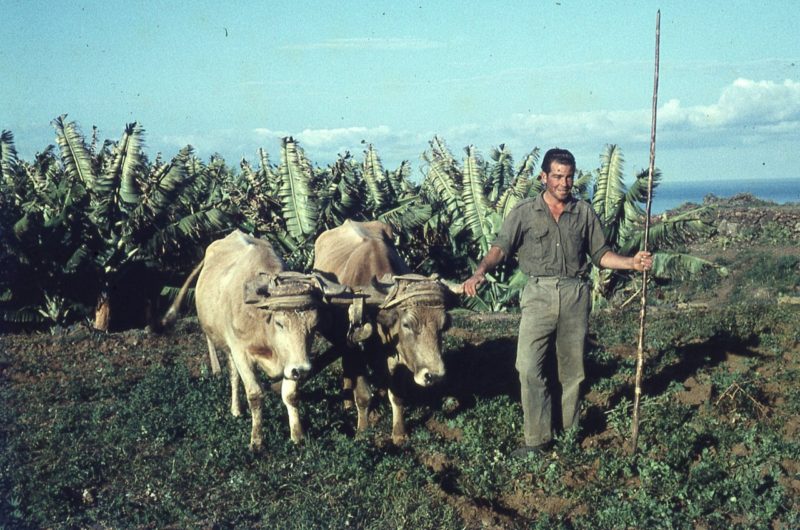
Text and photos by Ronald Mackay
To discover more of Ronald’s amazing year-long adventure in Tenerife, take a look at his book here:
Fortunate Isle: A Memoir of Tenerife
